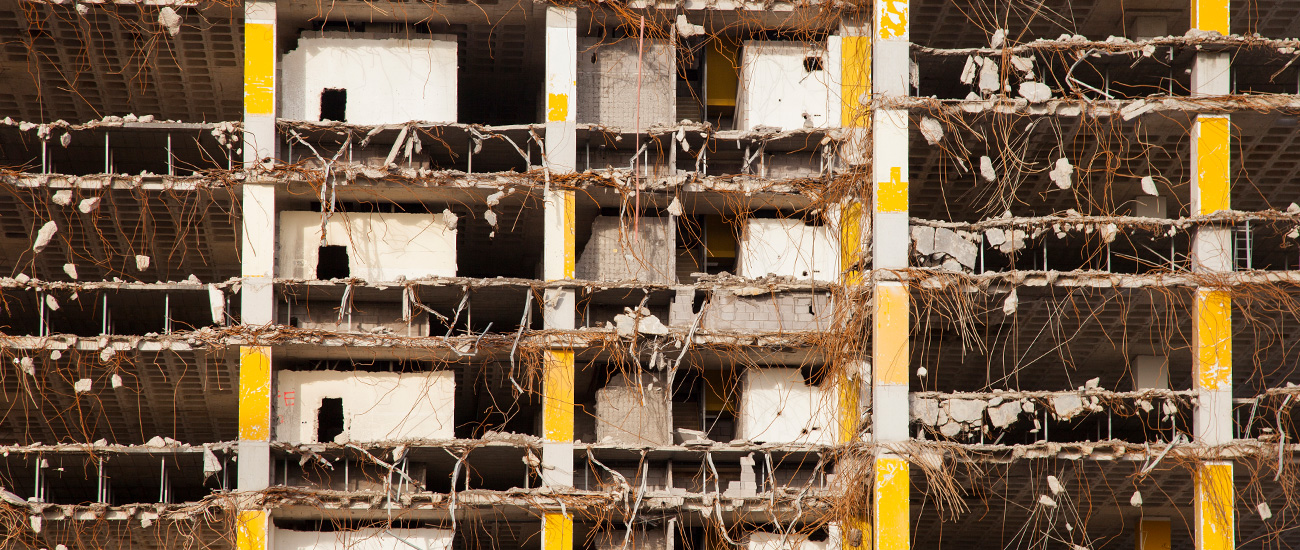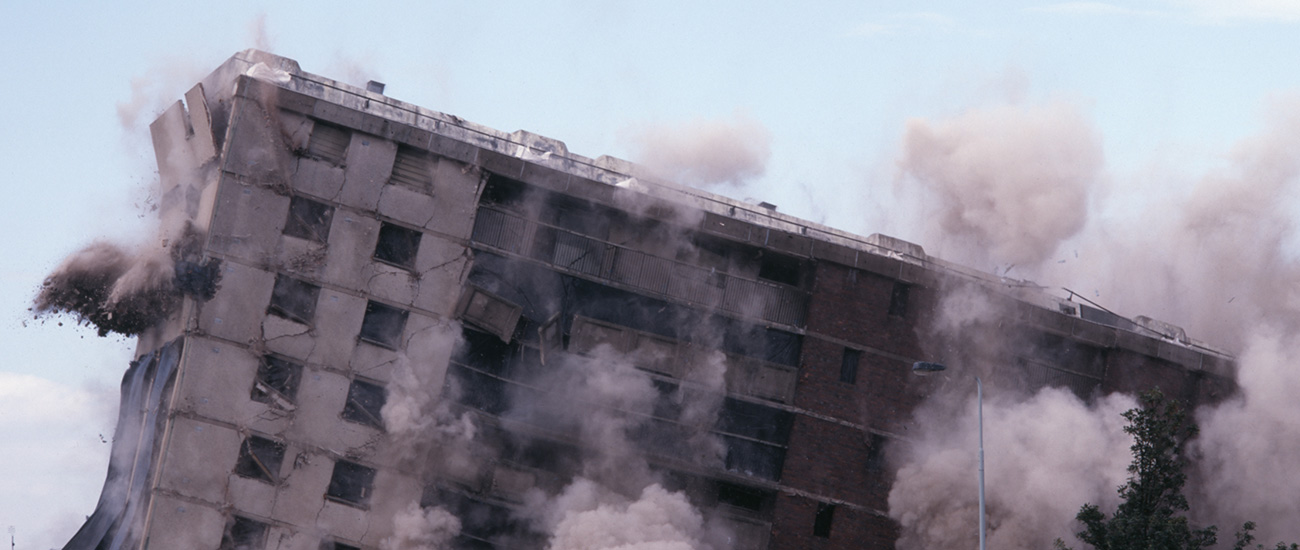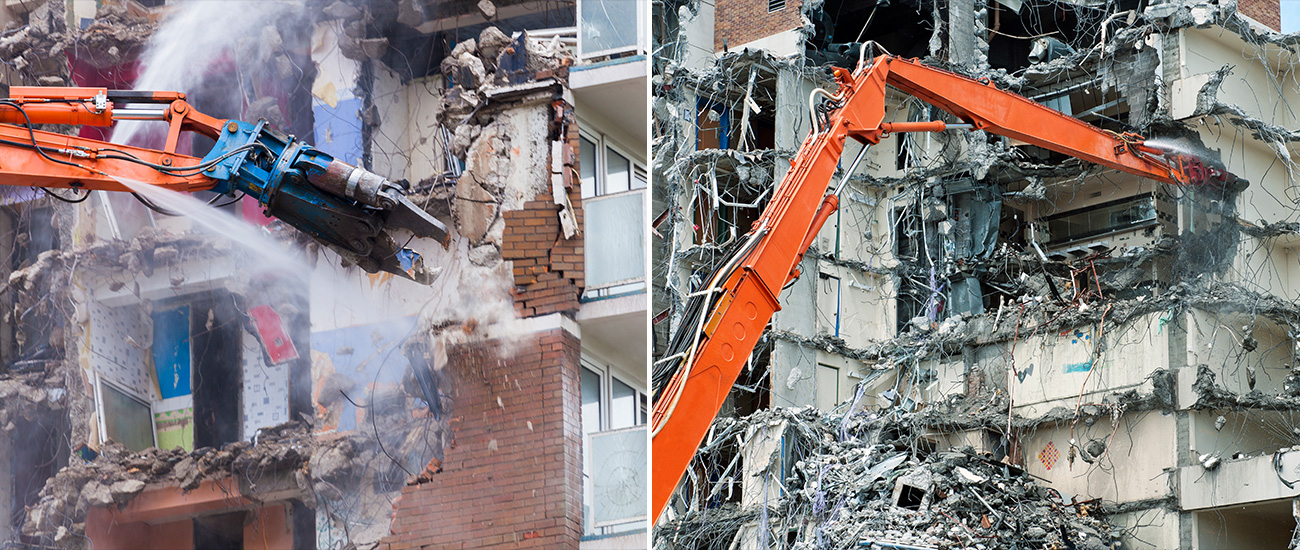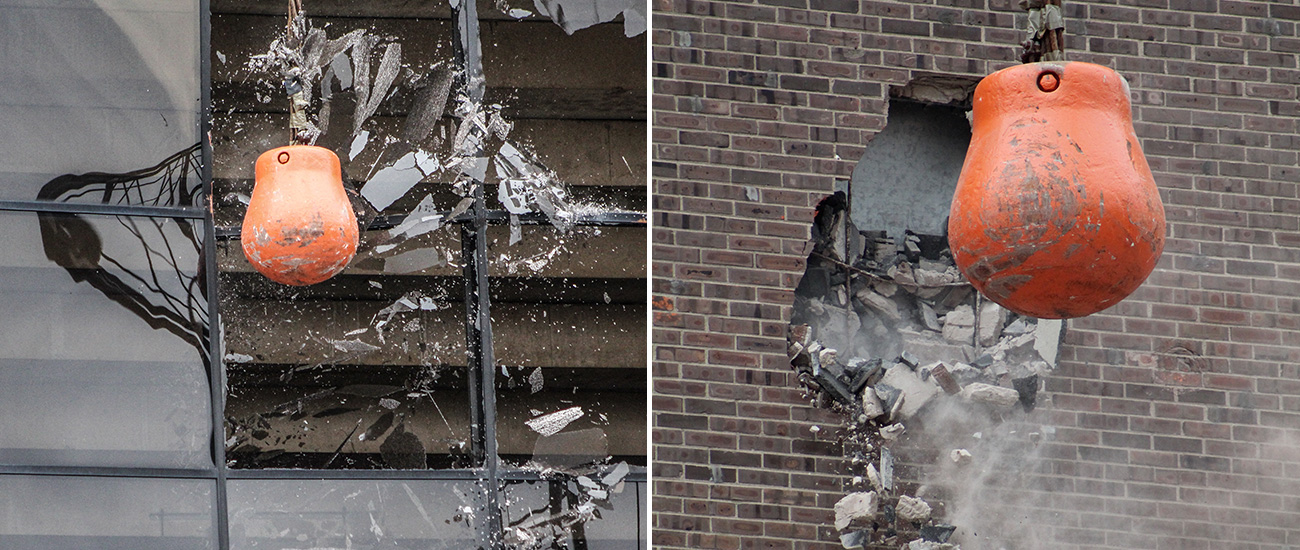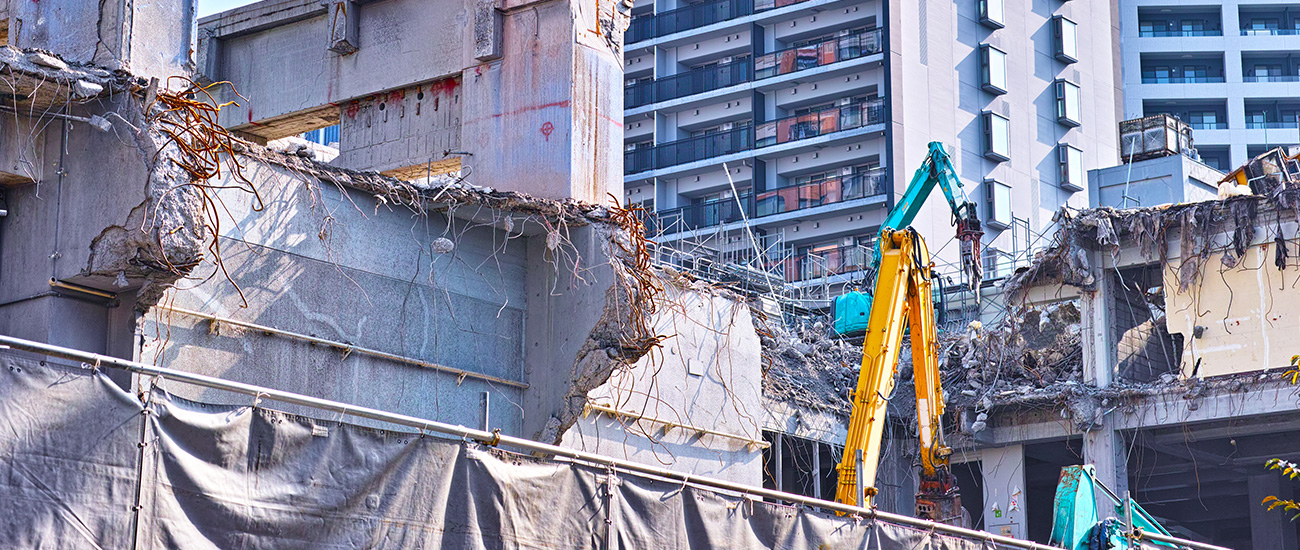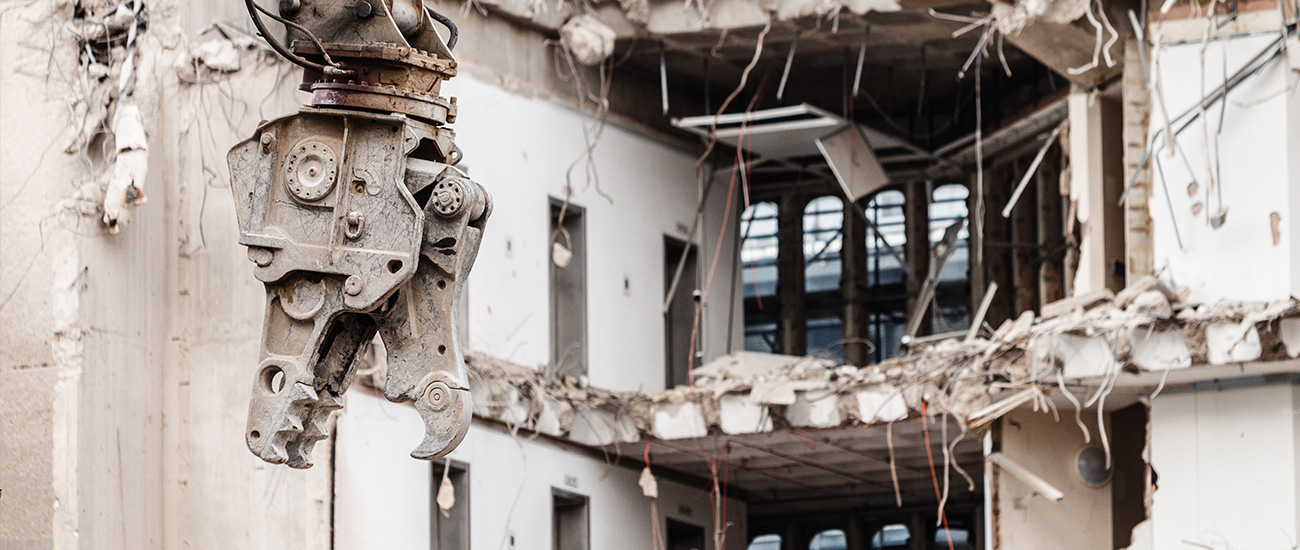Have you ever stopped to think about how tall structures built with steel and reinforced concrete are taken down? Perhaps it would surprise most to hear that nearly as much effort goes into the demolition process of many buildings as the actual erection of the structure itself.
Throughout the past century, several notable demolitions have taken place, including the Singer Building in downtown NYC and a disassembling 19 buildings within 15-hectare all taken down within 10 seconds. People often gather to witness this process first-hand to better appreciate the speed and accuracy with which a successfully dismantled building comes down.
However, taking down today’s high-rises with precision and safety is an extremely difficult task that requires meticulous planning and preparation. This article will explore several of the most common methods of bringing down a building, as well as the various factors site crews must take into consideration when planning to dismantle a structure.
4 Ways to Demolish a Building
Although there are more than 4 ways to bring down a structure, we will look at 4 of the most commonly practiced demolition methods below.
#1: Implosion
The implosion technique utilizes a strategic set of sequential detonations that are used to bring down critical vertical supports that keep a structure upright. With well-placed and well-timed explosions, the critical support structures are blown-away and the building spectacularly, and sometimes violently, implodes in on itself because of its own weight.
It is important to understand the structural blueprints of a building, choose appropriate explosives, and then place them with precision and a perfect detonation sequence, in order to successfully execute a demolition of this kind.
While this method is probably the most well-known and entertaining of the demolition methods, it also carries with it inherent risks. In fact, it is illegal in many jurisdictions today.
#2: High-Reach Demolition
High-reach [arm] demolition utilizes heavy base machines excavators to ensure a safe foundation, and feature an attached dismantling arm or a telescopic boom with demolition tools attached to the end, including hammers, shears, and crushers.
One reason high-reach demolition is so popular is due to its versatility. Machines can be outfitted with different tools to meet the demands of nearly any job. This method has been used on all types of buildings and structures, including those made of reinforced concrete and steel.
#3: Crane & Ball
Following the exciting spectacle of implosion demolitions, probably no other method is as iconic as the traditional crane & ball method.
Giant wrecking balls weighing more than 6 tons are used to dismantle concrete and masonry structures by dropping onto or smashing into a given structure, bringing buildings down with brute force.
Although it’s the oldest method in the books, it is held back by several limitations. Unsuitable building type, lack of experienced crane operators, and excessive noise, vibration and dust creation are typical issues facing the crane & ball method.
#4: Selective Demolition
Selective demolition (also known as “strip out”) is a very attractive option these days and involves only removing select parts of a building that do not bring down the entire structure. Interior and exterior parts of a building can be brought down, giving owners and developers flexibility in how the new building will look.
An additional benefit of this method as that it allows for large amounts of material to be recycled by blending this material from the old structure into the new building.
3 Key Factors to a Successful Demolition
Due to the complexity of the job, crews must consider an excess of external factors before tackling any job. Below are 3 of the most critical aspects that every job must properly prepare to successfully disassemble a building.
#1: Understand the Surrounding Environment
One of the most important factors to consider before demolishing a building is the surrounding environment and topography of the area. The geographic location, soil conditions and even the prevailing wind and weather patterns must all be understood to ensure appropriate steps are taken to minimize environmental damage.
The space around the to-be dismantled building must also be carefully studied to ensure that surrounding structures are not damaged during the process. If the distance between nearby buildings is insufficient, noise and vibration, along with dust and debris from the work, can cause serious extraneous damage to anything nearby.
#2: Understand the Structure
The next factor that must be carefully studied is the actual structure type and usage of the building that is about to come down. Buildings are built according to a number of different construction standards and techniques, and each requires their own bespoke demolition solutions.
For example, residential buildings such as apartments are made of reinforced concrete, while buildings destined for office space are often constructed of steel, and each would require a different methodology to be brought down.
Thus, to ensure that a building is taken down successfully, crews must first fully appreciate and understand the structure before making its destruction plan.
#3: Plan Accordingly
The final factors a demolition crew must consider are noise, vibration and the range of dust dispersion. Naturally, bringing down a large building is not easy, and thus requires a great deal of power and energy. Hence, a great deal of noise, vibration and dust will be generated throughout a typical process.
Therefore, it is critical to think of methods that will minimize the inconveniences coming from such a deconstruction process. This pre-planning increases the success rate of demolitions and increases the safety of everyone involved.
Careful Planning Means Successful Execution
Taking a building down often requires more careful study and planning than the original erection of the structure. This is because demolition crews must consider a wide-range of environmental factors, consequences of the work, and full understanding of the building they plan to bring down in order to select the appropriate method.
Now, the next time you see a building coming down, you will better understand what it took to make that happen!


